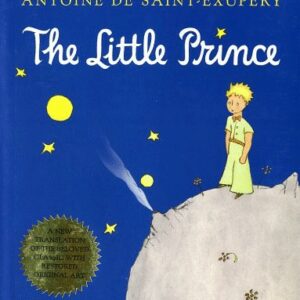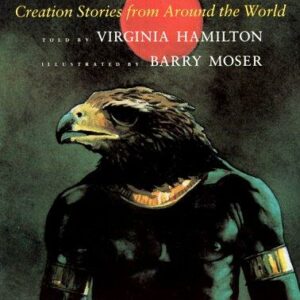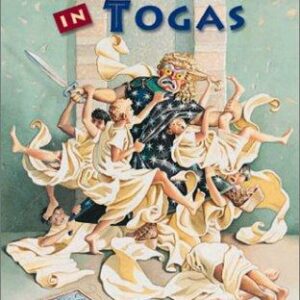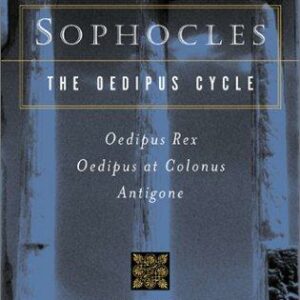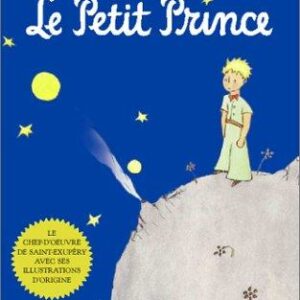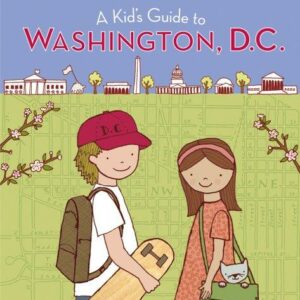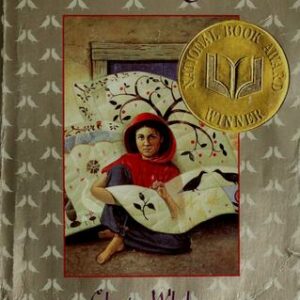The Odyssey
$17.00
| Title | Range | Discount |
|---|---|---|
| Trade Discount | 5 + | 25% |
- Description
- Additional information
Description
The classic translation of The Odyssey, now in paperback. This edition also features a map, a Glossary of Names and Places, and Fitzgerald’s Postscript. Line drawings precede each book of the poem. Robert Fitzgerald’s translation of Homer’s Odyssey is the best and best-loved modern translation of the greatest of all epic poems. Since 1961, this Odyssey has sold more than two million copies, and it is the standard translation for three generations of students and poets. Farrar, Straus and Giroux is delighted to publish a new edition of this classic work. Fitzgerald’s supple verse is ideally suited to the story of Odysseus’ long journey back to his wife and home after the Trojan War. Homer’s tale of love, adventure, food and drink, sensual pleasure, and mortal danger reaches the English-language reader in all its glory.
Of the many translations published since World War II, only Fitzgerald’s has won admiration as a great poem in English. The noted classicist D. S. Carne-Ross explains the many aspects of its artistry in his Introduction, written especially for this new edition.
Winner of the Bollingen Prize
Robert Fitzgerald’s is the best and best-loved modern translation of the Odyssey, and the only one admired in its own right as a great poem in English. Fitzgerald’s supple verse is ideally suited to the story of Odysseus’ long journey back to his wife and home after the Trojan War. Homer’s tale of love, adventure, food and drink, sensual pleasure, and mortal danger reaches the English-language reader in all its glory.
Robert Fitzgerald’s versions of the Iliad, the Aeneid, and the Oedipus cycle of Sophocles (with Dudley Fitts) are also classics. At his death, in 1988, he was Boylston Professor of Rhetoric and Oratory at Harvard.
Homer is a legendary ancient Greek epic poet,traditionally said to be the creator of the epic poems the Iliad and the Odyssey. Homer’s works form the groundwork of the Western Canon and are universally praised for their genius. Their formative influence in shaping many key aspects of Greek culture was recognized by the Greeks themselves, who considered him as their instructor.
This teacher’s guide is keyed to the Robert Fitzgerald translation of The Odyssey. By universal consensus, Fitzgerald’s Odyssey is acknowledged to have an openness and immediacy unsurpassed by any other English translation.
Little is certain when it comes to the origins of The Odyssey or its partner epic, The Iliad. The Iliad is the prequel, as we would now call it, to The Odyssey in the legendary story of the Greek expedition to reclaim Helen from the city of Troy. Both epics circulated from the dawn of literacy under the name of Homer, but who this fabled poet was, and when and where he lived, remain riddles. Already some ancient critics doubted a single poet wrote both epics, and most modern scholars prefer to ascribe the creation and shaping of both stories to a tradition rather than to one or even two authors. Legends about the gods, and about a variety of heroes and their exploits, were in constant circulation and development, handed down from generation to generation. Over many centuries, bards developed highly formalized language to chant the stories in public performances. As the scenes of performances in The Odyssey suggest, these singers had a large repertoire of tales from which they chose when aiming to satisfy a particular audience’s demand, or more likely the request of the local lord. The material was familiar, and the language traditional, indeed formulaic, so that a good singer could always improvise, in proper style and meter, a song that suited the performance situation in theme, episodes, details, scope, and tone. All the songs, as far as we can tell, gave audiences a vision of their ancestors, people more glorious and admirable than the singer’s contemporaries, whether in victory or in defeat. In their greatness, in their heroic pursuit of glory and undying fame, the epic characters defined the heroic code the listeners, at least initially members of a warrior class, were to follow. What conferred undying fame was epic song itself: listeners of epic would have aspired to become the subject of song for subsequent generations.
There must have been many signal events, many great moments in the history of epic before The Iliad and The Odyssey achieved the forms in which we know them, but two appear, in retrospect, to have been supremely significant. Many towns and settlements were sacked as peoples jockeyed for land and power in what is now Greece and Turkey, but it seems that a city known as Troy, or Ilium, on the northwest coast of Asia Minor, near the strait known as the Dardanelles, and for that strategic reason a significant power, was the frequent target of marauding attacks and sieges. One of the most devastating destructions it suffered fell shortly before or after 1200 B.C.E., some 3,200 years before our time. Around this destruction there seem to have coalesced stories of a Greek army on a mammoth campaign to sack the fortified city which sat astride sea and land lanes to the richer east. What was the reason for the expedition? Not greed and power politics—so legend has it— but the drive to recover something yet more precious: Greek honor in the shape of Helen, the beautiful wife of Meneláos, King of Sparta. Helen, the story goes, had been abducted by Paris, the handsome Trojan prince. And so the tale was spun backward.
The legendary campaign against Troy took ten years. The Iliad, long though it is, narrates a crucial patch of the tenth year only, when Akhilleus, the greatest hero of the Greeks, fell out with the Greek commander in chief, Agamémnon, Meneláos’ brother. By the end of The Iliad, Akhilleus has lost his companion, Patróklos, but has killed the great Trojan hero, Hektor. Troy was doomed, though its fall occurred in the cycle of stories, now mere fragments, that follow The Iliad, but not before Akhilleus himself met his death. The storytelling cycle continued with stories of the homecomings of the various Greek heroes, and it is the homecoming of the craftiest of those heroes, Odysseus, deviser of the Trojan horse itself, that is told in The Odyssey. Odysseus’ journey is the longest of all the heroes’—up to another ten years, given the wanderings and delays—and he faces almost fatal odds when he returns home, but his is the only truly successful homecoming. But no more of that now, since it is The Odyssey you are about to read.
The other signal moment in the development of the two Homeric poems seems to have fallen in the eighth century B.C.E., for reasons that are hard to pin down. Whether by destiny or by luck, there was a happy conjunction of, on the one hand, one or two singers who had so mastered the traditional material and style that they could spin out monumental versions of these two episodes of the Trojan cycle, extraordinary in size, subtlety, and complexity of design, and, on the other hand, the introduction of writing from the Near East. Whether our great singer or singers— we might as well let him (or them) bear the name “Homer”—were literate or not, within one or two generations these two poems were beginning their own odyssey as texts, written in an alphabet adapted from Phoenician letters first on scraps of hide, then on papyrus rolls, centuries later in vellum codices or books, and finally printed on paper, whether in scholarly editions of the Greek original or in translations in many languages like the one you have before you.
To say that this journey of Homer’s poem rivals Odysseus’ own journey is to say a great deal, for not unjustly have Odysseus’ long and perilous travels given the name to all wanderings of epic proportions. It takes him ten years to travel from Troy, on the northwest coast of Asia Minor, to his island kingdom of Ithaka, off the west coast of mainland Greece. The distance in miles is not the point. He travels far beyond the “real” world, visiting the fierce Laistrygonês and monstrous Kyklopês, Aiolos, King of the Winds, the dreamy land of Lotos Eaters, and passing Skylla and Kharybdis, rarely without losing some of his companions. He spends longer periods of time with the enchantress Kirkê and, after all his crew have perished, with the nymph Kalypso. But always he presses homeward. When, with the aid of Athena and the Phaiákians, he reaches Ithaka, the homecoming, and the poem, are but half accomplished. He must disguise himself and marshal a few allies before he can win back his very hearth and hall from the small army of suitors who have lain siege to his wife, Penélopê. She is a crafty and cunning force to be reckoned with, more than a match in wits for her suitors, and even at times for Odysseus himself. The second half of the poem is a story of disguise, misleading tales, and recognitions, of reunion not only of a husband and a wife, but of two father-son pairs. At the end, generations are reconciled, and civic strife averted.
For how long, no one can say. Cycles continue, legends go on and on, because Homeric poems end “in the middle of things,” as they begin. What has continued without end is the reading of The Odyssey. At the beginning of the poem, Homer asks the Muse, guarantor of epic memory, to sing through him. The Muse still sings in the pages of your book, and she is eager to begin. Attend her, and wonder.
The questions, exercises, and assignments that follow are designed not only to guide your students through The Odyssey and to help them approach it primarily as a compelling narrative that speaks to us directly today, but also to unlock an artifact from another time and place and culture that challenges us to consider what is human and universal, what is culture-bound and relative. The Odyssey is at once an archaeological treasure and a great read, an adventure story and a time machine. As a compelling narrative, questions will spring to mind, for The Odyssey is the story of a family reunited against all odds. The saga of Odysseus, Penélopê, and Telémakhos is a recognizable family drama, and many other figures are recognizable today. Can’t you imagine Telémakhos and Nausikaa among your students? Or Odysseus and Penélopê, or Helen and Meneláos, among others, as their parents?
To prepare your students to appreciate the second aspect, you may want to show them images from Greece and other Eastern Mediterranean cultures from ca. 2000 B.C.E. to 500 B.C.E. to help them visualize the world in which the Homeric heroes and Homeric audiences lived. If you can arrange a field trip to a local museum which has a collection of Greek antiquities, so much the better. You may also want to have them develop a time line from the Bronze and Iron Ages to the present on which you can help them plot the fall of Troy and the final phase of the development of the Homeric poems (as above) against the events of other cultures. Independent of such specifics, one should ask what it means for readers today to overhear the voices of so fundamentally “other a culture.” To what extent should we be prepared to suspend our own deeply ingrained moral expectations and accept the fact that Odysseus and his family, for example, own slaves? Is studying a culture from the past essentially different from studying a foreign culture contemporary to ours? How does The Odyssey itself present the reader with questions about cultural difference?
As an epic which is meant to memorialize a culture’s heroes, The Odyssey is dense with names and details. Encourage your students to keep a journal of their reading and to bring to class any and all questions that occur to them as they read. Finally, don’t forget that The Odyssey was, and in your translation is, poetry. Have each student select and prepare one or more passages he or she finds particularly significant or intriguing and then read it aloud to the class with feeling and dramatic gesture. You could also have pairs or small groups of students do a concerted reading or even perform certain key scenes from the text: for example, the recognitions of Odysseus by Telémakhos, Eur´ykleia, Penélopê, and Laërtês.
“A masterpiece . . . An Odyssey worthy of the original.” —William Arrowsmith, The Nation“Here there is no anxious straining after mighty effects, but rather a constant readiness for what the occasion demands, a kind of Odyssean adequacy to the task in hand.” —Seamus Heaney
Additional information
| Weight | 1 oz |
|---|---|
| Dimensions | 27 × 146 × 206 in |




